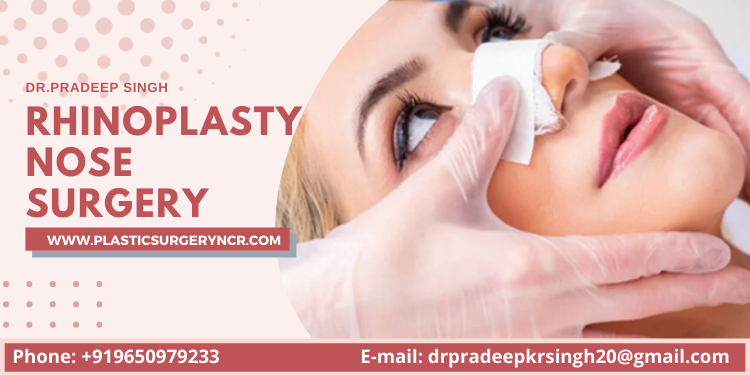A rhinoplasty nose surgery, also known as a nose job, is a procedure carried out to alter how your nose looks and functions. As per the American Society of Plastic Surgeons, approximately 220,000 rhinoplasties are done each year, making it the most popular procedure performed for facial plastic surgery. Rhinoplasty can help you improve your breathing and create an overall more balanced appearance.
Does Rhinoplasty Nose Surgery work for me?
The most common medical reason for Rhinoplasty is breathing difficulties via the nasal passages. Nasal obstruction can cause issues during exercise, disrupt sleep, trigger sleep apnea and snoring or affect other activities.
If treatment options (such as nasal sprays or sleep apnea therapy) are unsuccessful, surgery could be the next option. Rhinoplasty is performed for medical reasons, such as those that are typically protected by medical insurance.
Nasal surgery is adapted to the specific issue. If you notice that the septum — which is the midline cartilage wall that divides the left and right sides of the nose — is bent, the septoplasty alone can resolve the issue. But, if the septal deviation is more significant or occurs close to specific areas of nasal support, a rhinoplasty may be necessary to maintain an ideal nasal shape and breathing.
Rhinoplasty (also known as septorhinoplasty) treats septal deviation and helps strengthen the breathing zones of the nose by strategically implanted cartilage grafts.
What is the best way to improve your Rhinoplasty Nose Surgery?
Patients often ask, “While you’re there, are you able to make other changes on my face?” Yes, it is possible. Most requests involve the reduction of a nasal hump or a slender tip or correction of irregularities. Cosmetic modifications that aren’t insured can be often coupled with functional Rhinoplasty, so there’s only one way to recover.
What can I learn about this procedure?
Rhinoplasty Nose Surgery is done with a general anesthetic. A small cut is cut along the nasal base and is barely evident as it heals. The incision is linked to nasal incisions that are not visible. These incisions allow access to the cartilage and the bones that make up the nasal area. The nasal passageways are made more efficient, and nasal refining (if wanted) is done with precise, exact adjustments to cartilage and bone.
Patients often ask, “Will you have to break my nose?” Most likely, it is not. The majority of rhinoplasties leave the bone in good shape. If the patient has experienced severe trauma to the nose, nasal bones can be moved into a more favorable place during the procedure.
To improve appearance, the bony nasal hump could be smoothed to create a straight or easier curve. Patients wake up from anesthesia and then go home that same day.
What can I anticipate for recovery?
You can expect to have an entire week off from school or work. During that time, rest, ice, and a routine of regular nasal cleansing are recommended. Although painkillers are available for some, the majority of people only need these for a couple of days.
In the course of recovery, it becomes difficult to breathe freely through the nose since splints (bendable thin sheets of plastic) are put inside the nostril to ensure that the septum stays straight. The swelling increases at the end of the third day; it then diminishes. The eyes may be swollen, and bruising can occasionally occur. In the first week following surgery, you’ll put a tiny mask on the nose to help protect it and lessen swelling.
A week after the surgery, the cast and splints will be taken off in the office. It is then possible to go back to work and begin a cardiovascular exercise, like running or walking. It is recommended to stay away from contact sports for 6 weeks. If you don’t, you’ll be back to routine in the two weeks following the procedure.
Although you’re likely to recover quickly in the first few months, full recovery could take one year. Most swelling goes away within the first month, and any swelling should disappear within one year.
For more information about Rhinoplasty Nose Surgery, schedule a consultation today!
If you’re interested in the procedure for cosmetic or functional reasons, arrange an appointment with Dr. Pradeep Kumar Singh who is a well-known Plastic and Cosmetic surgeon in Delhi.
It is possible to ask your primary physician or health insurance company for a recommendation from a surgeon who is in your network. You and your surgeon will make an individual plan that is tailored to your needs.

